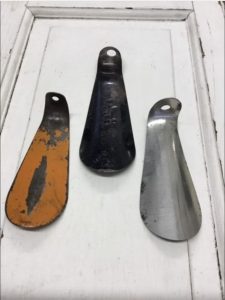History of shoe horns
Shoe horns boast a rich history that stretches back to the 15th century. Initially, artisans crafted these tools from readily available materials such as animal horn, bone, or wood. Their primary purpose was to assist individuals in sliding their feet into shoes without damaging the shoe’s heel. The craftsmanship of early shoe horns reflected the practical needs of the time, with durability and functionality being paramount.
As centuries passed, the design and materials of shoe horns evolved. The industrial revolution brought about the use of metals like brass and steel, which added strength and longevity to the tool. The 19th and 20th centuries saw the introduction of plastic and other synthetic materials, making shoe horns more accessible and affordable. In some cases, shoe horns were even made from silver and adorned with intricate designs, transforming a simple tool into a piece of art. These decorative shoe horns were often used by the upper classes and reflected the aesthetic tastes and technological advancements of their eras.
Usage of Shoe Horns
The primary function of a shoe horn is to make it easier to put on shoes without bending or crushing the heel counter. By using a shoe horn, one can effortlessly slide their foot into the shoe, thereby maintaining the shoe’s shape and extending its life. This tool is particularly beneficial for shoes with a stiff or narrow opening, where inserting the foot can be challenging.
Shoe horns come in various designs to cater to different needs. Short, hand-held versions are compact and easy to carry, making them convenient for travel. Long-handled models, on the other hand, are especially useful for individuals with limited mobility or those who have difficulty bending down. These longer versions allow users to put on their shoes while standing, providing both comfort and convenience.
Legacy of Shoe Horns
The legacy of shoe horns extends well beyond their practical applications. They are a testament to the blend of functionality and craftsmanship that characterized many everyday objects of the past. Antique shoe horns, in particular, showcase intricate designs and high-quality materials, making them prized possessions for collectors and enthusiasts. These vintage pieces often feature elaborate engravings, ornate handles, and the use of precious metals, highlighting the artistry involved in their creation.
In the modern era, many people still use shoe horns daily, while others collect vintage shoe horns, cherishing them as historical artifacts that offer a glimpse into past lifestyles and craftsmanship.
